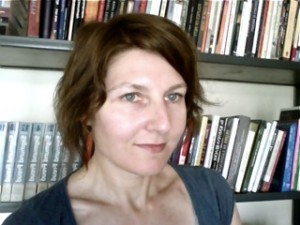
Notes on the CEREV Curatorial Workshop
On Friday March 2, about 10 people gathered in the CEREV Lab to engage with my proposal for a fictive exhibit that brings together two objects currently on display at the Canadian War Museum: a black Mercedes-Benz bulletproof limousine that was once used by Hilter as a parade car, and Gertrude Kearns (1996) painting Somalia Without Conscience, an image that depicts Master Corporal Clayton Matchee (of the now disbanded Canadian Airborne Regiment) posing beside tortured Somali teenager Shidane Arone. The intent was to discuss our shared interpretation of these two cultural objects when placed in juxtaposition and framed by the concept of the “war trophy”. What ensued was a dynamic conversation about the work of memory, representation and pedagogy in the context of the Canadian War Museum, as well as insights on the possibilities and limits of curation as a method for cultural analysis.
The Oxford English Dictionary defines workshop as a “meeting for discussion, study and experiment”. My experience presenting
research-in-progress with folks at the CEREV Curatorial Workshop was just that: an opportunity to engage in lively, collegial dialogue, to put new ideas to the test, and to gain a fresh perspective on my work. Most of us know how difficult it can feel to share our intellectual labors in that nascent stage of ‘becoming’, when ideas, theories and modes of understanding are young and emergent. And yet it is often at this very point in our work that dialogue and critique proves most fruitful. The team at CEREV provided just the kind of supportive and engaged environment for this sort of intellectual risk-taking. I am deeply grateful for the depth of engagement, curiosity and energetic critique shared by participants. Not only did I gain new insights into my project, I also found a vibrant intellectual community with whom I look forward to forging new collaborations.
Post by Sara Matthews, Assistant Professor of Global Studies, Wilfred Laurier University.



